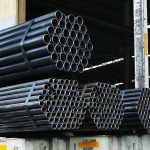
Ensuring safety in metal fabrication processes is paramount for any metal fabricator in Dubai to protect workers, maintain operational efficiency, and comply with regulatory standards. Metal fabrication involves handling heavy machinery, sharp tools, and hazardous materials, all of which pose significant risks if proper safety measures are not followed.
Training and education
Provide thorough training programs for all employees involved in metal fabrication. Training should cover the safe operation of machinery, proper handling of tools, understanding of material properties, and awareness of hazards. Regular refresher courses and updates on safety protocols are essential to keep skills current and reinforce safety practices.
Use of personal protective equipment (PPE)
Ensure that workers wear appropriate PPE at all times. This includes safety glasses to protect eyes from sparks, flying debris, and UV radiation, hearing protection (earplugs or earmuffs) to mitigate noise levels from machinery, gloves to shield hands from sharp edges and heat, respiratory protection when working with fumes or dust, and steel-toed boots for foot protection from heavy objects.
Machine guarding and safety features
Install and maintain machine guards on equipment such as press brakes, shears, and grinders to prevent accidental contact with moving parts. Ensure that safety interlocks and emergency stop buttons are functional and easily accessible. Regularly inspect machinery for wear, damage, or malfunction that could compromise safety.
Hazardous material handling
Implement procedures for the safe handling, storage, and disposal of hazardous materials commonly used in metal fabrication, such as solvents, lubricants, and welding gases. Provide adequate ventilation in work areas to minimize exposure to fumes and ensure proper containment of flammable materials.
Fire prevention and control
Maintain a clean and organized workspace to reduce fire hazards. Ensure that fire extinguishers are readily available, properly maintained, and employees are trained in their use. Implement a fire prevention plan that includes regular inspections, fire drills, and awareness of combustible materials and ignition sources.
Safe handling of heavy materials
Use appropriate lifting techniques and equipment (such as cranes, hoists, and forklifts) to safely handle heavy metal components and materials. Train employees in proper lifting techniques to prevent strains and injuries. Ensure that load capacities are never exceeded and that loads are properly secured during transportation.



